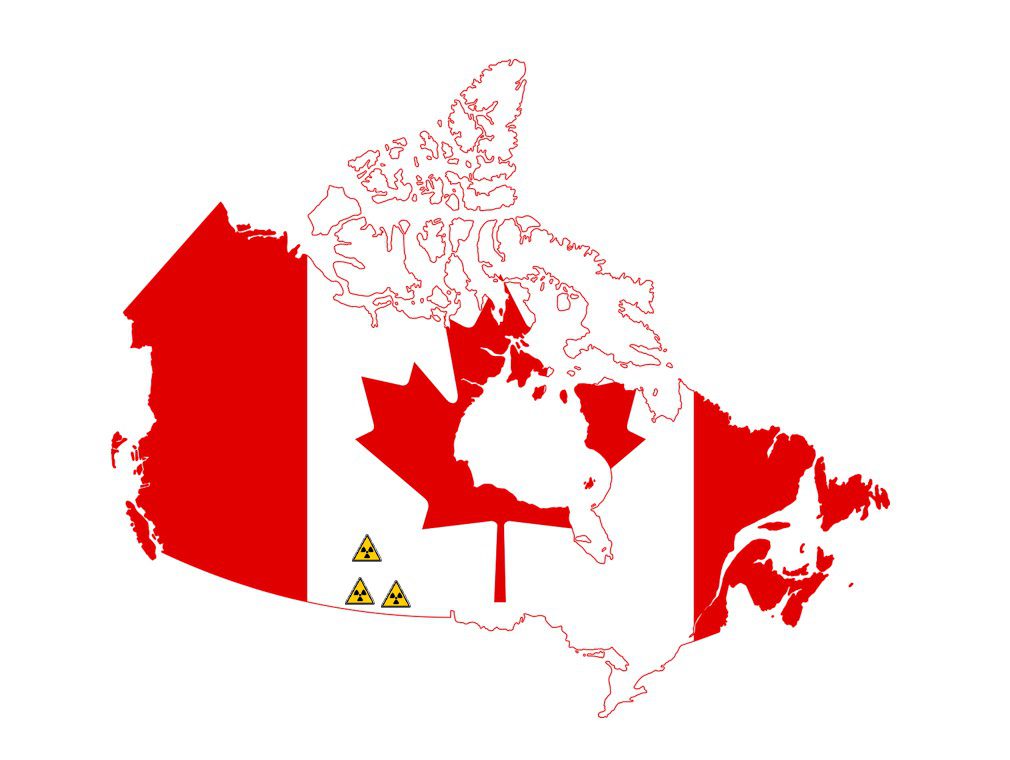

Small modular reactors that generate nuclear power will likely be located near the North Dakota and Montana borders.
Four Canadian provinces that include Saskatchewan, Alberta, Ontario, and New Brunswick released their strategic plan on Monday to expand the nuclear industry through the development of small modular reactors, or SMRs.
Currently, there isn’t any power generated by nuclear reactors in Saskatchewan, but if the strategic plan comes to fruition in the next eight years, the communities of Estevan, Coronach, and Saskatoon would have SMRs.
Estevan is 18 miles north of Noonan and 10 miles north of the U.S. border. Coronach is 26 miles north of Scobey, Mont. Saskatoon is in northern Saskatchewan, but is also the largest city in the province.
A fourth option is Lake Diefenbaker, near Saskatoon. It would provide a good water source but provides drinking water for most of southern Saskatchewan. Critics are concerned that an accident could compromise drinking water for half the province’s population.
SMRs could mean a lot of different things. For instance, the federal government wants the province to phase out of coal generated power and the strategic plan calls for more uranium to be mined in the province, while SMRs represent zero carbon emissions.
For Roy Ludwig, SMRs are a consolation of sorts. Ludwig says he has always been a forward thinker and believes SMRs are the answer for western Canada going further into the 21st century. Unfortunately, it would mean a net loss of jobs when coal is phased out.
Ludwig is the mayor of Estevan and says he is looking at the SMRs as a way to keep his growing community of 15,000 stable. The province of Saskatchewan has been lobbying for SMRs two years, and Ludwig says he’s been on board since day one.
“With our water availability, we would be a potential location,” Ludwig said. “The province has always maintained that we would be a potential location.”
Three dams, Boundary, Rafferty, and Grant Devine are located within striking distance of Estevan. Rafferty and Grant Devine, formerly Alamada Dam, were built to help protect the city of Minot from flooding. Lake Darling, near Carpio and Foxholm, is the fourth dam on the Grant Devine Reservoir.
The Alameda Dam was renamed Grant Devine in honor of former Saskatchewan Premier Grant Devine who led the province from 1982 to 1991.
Electricity infrastructure is already in place because of the power plants south of the city. SaskPower, the Crown corporation that would be transporting the electricity, didn’t return a request for comment. But in a statement on its website, indicated the research for SMRs has been ongoing for 40 years.
“We feel SMRs are intrinsically safe, they were perfected in the large U.S. submarines over 30 years or more,” Ludwig said. “We continue to export power to our neighbors to the south and expect that would continue.”
However, with the federal government’s announcement to phase out coal fired power plants by 2030, that could be economically catastrophic for Estevan, Bienfait, Oxbow, and even Weyburn if SMRs didn’t replace the power plants.
Boundary Dam Power Station is southwest of Estevan and Shand is southeast of the city.
“At this time we have not seriously discussed how many potential jobs would be involved,” Ludwig said. “With the two existing coal fired power plants, we are looking at 500 to 600 jobs along with the mine which would be another 400 jobs. And when you talk spin off jobs such as supply chain and support jobs, would be at least another 1,000 jobs.”
As far as SMR jobs, Ludwig indicated there would be several hundred positions to build the plants and when they are finished, there’s really no solid number at this time.
“With the fact that the potential for the loss of the coal industry is hanging over our head and the (power) grid is already here, it would make the most sense in my opinion to put the SMR here,” Ludwig said. “Depending on what happens to coal, if we get the SMR, it will be beneficial for us from the point of view of jobs.”
Otherwise, Estevan’s economic development group has been considering other options as the population of the community continues to grow. But there is no doubt that if the coal industry is gone, it’s going to impact southeastern Saskatchewan in a big way.
“We have been mining coal in this area in some fashion since the late 1800s,” Ludwig said. “To move away from coal would be life changing in our area. Coal has been one of our main economic drivers, along with oil and gas and farming.”
Thus far, Ludwig said hasn’t heard much negativity regarding nuclear power in Estevan or Coronach, but indicated when it’s confirmed, there likely will be people protesting its use.
He added the produced power would be exported throughout the province and into the United States. An SMR costs about $5 billion to build and put into production. The strategic plan calls for the first SMR to be built in Ontario, then four in Saskatchewan between 2034 and 2042.
The plan calls for nuclear power generation of up to 1,200 megawatts, which could possibly power up to 900,000 homes.